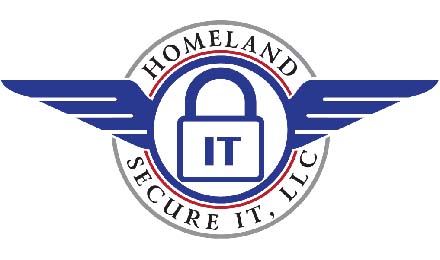 On Monday 2015-03-09, Apple released a slew of updates to address security issues, and on the regularly scheduled “Patch Tuesday” 2015-03-10, Microsoft made a rather large bundle of security updates available.
On Monday 2015-03-09, Apple released a slew of updates to address security issues, and on the regularly scheduled “Patch Tuesday” 2015-03-10, Microsoft made a rather large bundle of security updates available.
Many security experts did not believe Microsoft would correct the FREAK vulnerability during this batch of patches, however it appears that they did.
It is estimated that the FREAK vulnerability affects hundreds of millions of PCs and it seems that those who apply the patches on their Apple, iOS and Microsoft machines may be secure.
If you question whether your computer or business network is up to date and secure, please seek out proper IT support. Homeland Secure IT would be more than happy to talk with you if you use our CONTACT FORM or call us at 864.990.4748 – we provide IT service, support and complete outsourcing to Greenville and the entire Upstate SC area.
What follows is the Microsoft summary of their patches.
| Bulletin ID | Bulletin Title and Executive Summary | Maximum Severity Rating | Restart | Affected |
| & Vulnerability Impact | Software | |||
| MS15-018 | Cumulative Security Update for Internet Explorer (3032359) | Critical | Requires restart | Microsoft Windows |
| This security update resolves vulnerabilities in Internet Explorer. The most severe of the vulnerabilities could allow remote code execution if a user views a specially crafted webpage using Internet Explorer. An attacker who successfully exploited these vulnerabilities could gain the same user rights as the current user. Customers whose accounts are configured to have fewer user rights on the system could be less impacted than those who operate with administrative user rights. | Remote Code Execution | Internet Explorer | ||
| MS15-019 | Vulnerability in VBScript Scripting Engine Could Allow Remote Code Execution (3040297) | Critical | May require restart | Microsoft Windows |
| This security update resolves a vulnerability in the VBScript scripting engine in Microsoft Windows. The vulnerability could allow remote code execution if a user visits a specially crafted website. An attacker who successfully exploited this vulnerability could gain the same user rights as the current user. If the current user is logged on with administrative user rights, an attacker who successfully exploited this vulnerability could take complete control of an affected system. An attacker could then install programs; view, change, or delete data; or create new accounts with full user rights. | Remote Code Execution | |||
| MS15-020 | Vulnerabilities in Microsoft Windows Could Allow Remote Code Execution (3041836) | Critical | May require restart | Microsoft Windows |
| This security update resolves vulnerabilities in Microsoft Windows. The vulnerabilities could allow remote code execution if an attacker successfully convinces a user to browse to a specially crafted website, open a specially crafted file, or browse to a working directory that contains a specially crafted DLL file. | Remote Code Execution | |||
| MS15-021 | Vulnerabilities in Adobe Font Driver Could Allow Remote Code Execution (3032323) | Critical | Requires restart | Microsoft Windows |
| This security update resolves vulnerabilities in Microsoft Windows. The most severe of the vulnerabilities could allow remote code execution if a user views a specially crafted file or website. An attacker who successfully exploited the vulnerability could take complete control of an affected system. An attacker could then install programs; view, change, or delete data; or create new accounts with full user rights. | Remote Code Execution | |||
| MS15-022 | Vulnerabilities in Microsoft Office Could Allow Remote Code Execution (3038999) | Critical | May require restart | Microsoft Office, |
| This security update resolves vulnerabilities in Microsoft Office. The most severe of the vulnerabilities could allow remote code execution if a user opens a specially crafted Microsoft Office file. An attacker who successfully exploited the vulnerabilities could run arbitrary code in the context of the current user. Customers whose accounts are configured to have fewer user rights on the system could be less impacted than those who operate with administrative user rights. | Remote Code Execution | Microsoft Server Software | ||
| MS15-023 | Vulnerabilities in Kernel-Mode Driver Could Allow Elevation of Privilege (3034344) | Important | Requires restart | Microsoft Windows |
| This security update resolves vulnerabilities in Microsoft Windows. The most severe of the vulnerabilities could allow elevation of privilege if an attacker logs on to the system and runs a specially crafted application designed to increase privileges. An attacker could then install programs; view, change, or delete data; or create new accounts with full administrative rights. | Elevation of Privilege | |||
| MS15-024 | Vulnerability in PNG Processing Could Allow Information Disclosure (3035132) | Important | May require restart | Microsoft Windows |
| This security update resolves a vulnerability in Microsoft Windows. The vulnerability could allow information disclosure if an attacker convinces a user to visit a website that contains specially crafted PNG images. | Information Disclosure | |||
| MS15-025 | Vulnerabilities in Windows Kernel Could Allow Elevation of Privilege (3038680) | Important | Requires restart | Microsoft Windows |
| This security update resolves vulnerabilities in Microsoft Windows. The most severe of the vulnerabilities could allow elevation of privilege if an attacker logs on to an affected system and runs a specially crafted application. An attacker who successfully exploited the vulnerability could run arbitrary code in the security context of the account of another user who is logged on to the affected system. An attacker could then install programs; view, change, or delete data; or create new accounts potentially with full user rights. | Elevation of Privilege | |||
| MS15-026 | Vulnerabilities in Microsoft Exchange Server Could Allow Elevation of Privilege (3040856) | Important | Does not require restart | Microsoft Exchange |
| This security update resolves vulnerabilities in Microsoft Exchange Server. The most severe of the vulnerabilities could allow elevation of privilege if a user clicks a specially crafted URL that takes them to a targeted Outlook Web App site. An attacker would have no way to force users to visit a specially crafted website. Instead, an attacker would have to convince them to visit the website, typically by getting them to click a link in an instant messenger or email message that takes them to the attacker’s website, and then convince them to click the specially crafted URL. | Elevation of Privilege | |||
| MS15-027 | Vulnerability in NETLOGON Could Allow Spoofing (3002657) | Important | Requires restart | Microsoft Windows |
| This security update resolves a vulnerability in Microsoft Windows. The vulnerability could allow spoofing if an attacker who is logged onto a domain-joined system runs a specially crafted application that could establish a connection with other domain-joined systems as the impersonated user or system. The attacker must be logged onto a domain-joined system and be able to observe network traffic. | Spoofing | |||
| MS15-028 | Vulnerability in Windows Task Scheduler Could Allow Security Feature Bypass (3030377) | Important | Requires restart | Microsoft Windows |
| This security update resolves a vulnerability in Microsoft Windows. The vulnerability could allow a user with limited privileges on an affected system to leverage Task Scheduler to execute files that they do not have permissions to run. An attacker who successfully exploited this vulnerability could bypass ACL checks and run privileged executables. | Security Feature Bypass | |||
| MS15-029 | Vulnerability in Windows Photo Decoder Component Could Allow Information Disclosure (3035126) | Important | May require restart | Microsoft Windows |
| This security update resolves a vulnerability in Microsoft Windows. The vulnerability could allow information disclosure if a user browses to a website containing a specially crafted JPEG XR (.JXR) image. This vulnerability would not allow an attacker to execute code or to elevate their user rights directly, but it could be used to obtain information that could be used to try to further compromise the affected system. | Information Disclosure | |||
| MS15-030 | Vulnerability in Remote Desktop Protocol Could Allow Denial of Service (3039976) | Important | Requires restart | Microsoft Windows |
| This security update resolves a vulnerability in Microsoft Windows. The vulnerability could allow denial of service if an attacker creates multiple Remote Desktop Protocol (RDP) sessions that fail to properly free objects in memory. By default, RDP is not enabled on any Windows operating system. Systems that do not have RDP enabled are not at risk. | Denial of Service | |||
| MS15-031 | Vulnerability in Schannel Could Allow Security Feature Bypass (3046049) | Important | Requires restart | Microsoft Windows |
| This security update resolves a vulnerability in Microsoft Windows that facilitates exploitation of the publicly disclosed FREAK technique, an industry-wide issue that is not specific to Windows operating systems. The vulnerability could allow a man-in-the-middle (MiTM) attacker to force the downgrading of the key length of an RSA key to EXPORT-grade length in a TLS connection. Any Windows system using Schannel to connect to a remote TLS server with an insecure cipher suite is affected. | Security Feature Bypass |
